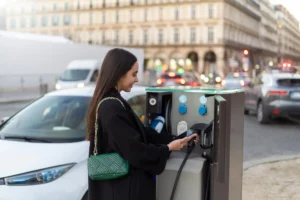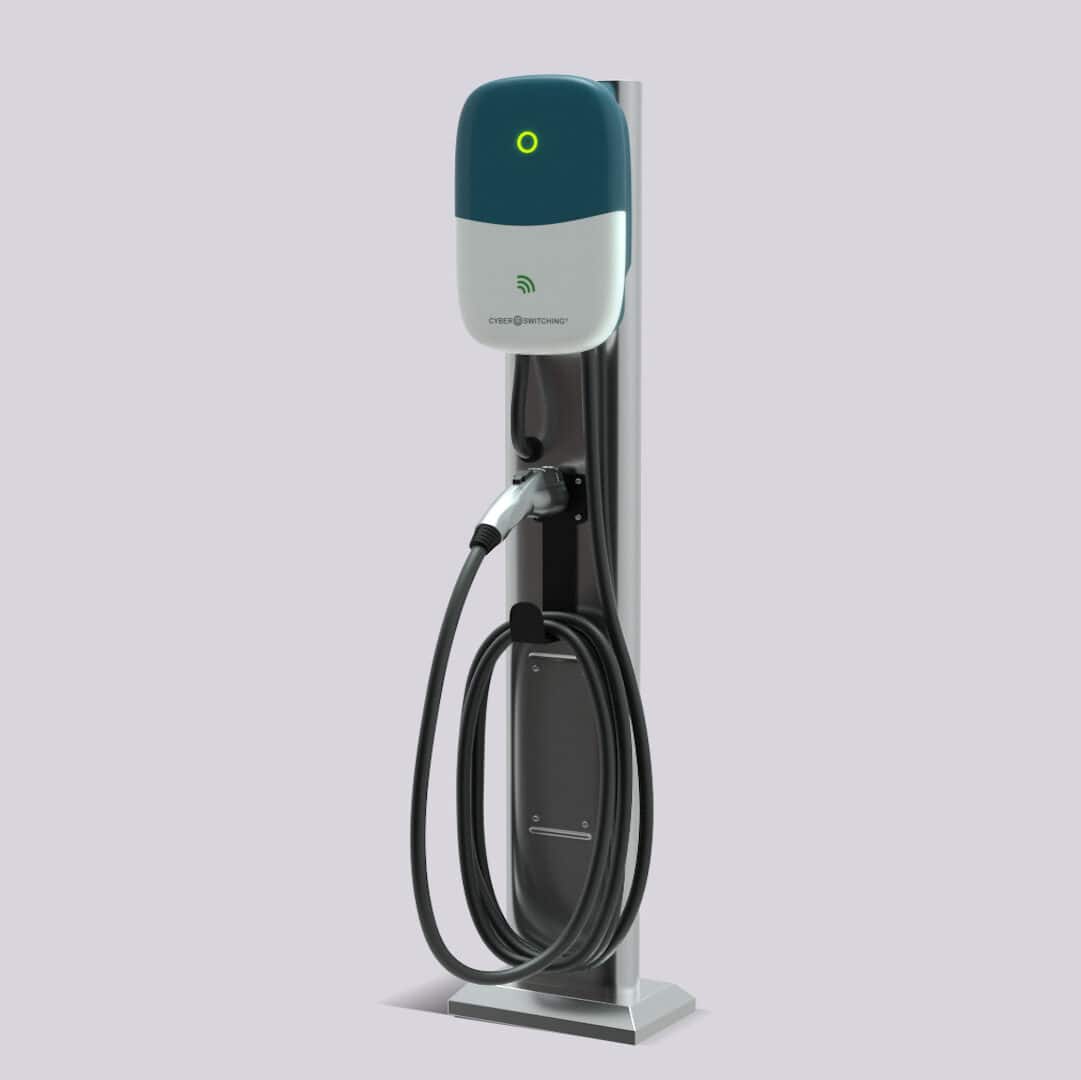
Home / EV Charging News / Day or Night: When is the Best Time to Charge Your EV?
EVs produce zero tailpipe emissions, but they are not 100% free from releasing Greenhouse Gas (GHG) emissions. The energy source used to charge your EV determines its carbon footprint. Charging an EV with a clean energy source will produce less pollution than using dirty energy sources, this is why you should learn the best time to charge an EV at home.
In this article, we gathered all the information you need on the best time to charge an electric car at home to reduce GHG emissions and save money. Here you will learn the best time to charge an EV, the importance of the time of the day when EV charging, the concept of peak and off-peak hours, and more.
Determining the best time to charge an electric car depends on two factors: energy source and Time-of-Use (TOU) tariffs. Considering the energy source will make a positive impact on the environment while considering TOU tariffs will make a positive impact on your finances.
The source of the energy consumed from the grid usually determines the best time of the day to charge an EV. While the energy mix varies per state, most states produce a cleaner energy mix during the day, while others do so during the night. This varies considering natural resources and the type of energy used in the state, we will further explain this in the following section.
The TOU tariffs do not directly benefit the environment, but this and other demand-side management strategies save you money when charging an EV at the right time of day. Most utilities offer TOU tariffs or alternative Time-variable pricing (TVP) electricity tariffs for U.S. customers. By choosing these tariffs, you can charge EVs at off-peak hours when electricity is cheaper.
The best time to charge your car at home (day or night) is usually determined by your particular location and the contract with your utility. In the following sections, you will learn more about how to determine the best charging schedule (day or night) for you.
All U.S. states have a certain electrical capacity available at any given hour, with the energy mix varying per state. During on-peak hours, the additional electrical capacity is usually covered with thermal power stations that burn fossil fuels (coal, gas, and others) to inject power into the grid.
Thermal power stations can start within an hour to supply power to the grid, but these are some of the most contaminating energy sources. Charging an EV during on-peak hours in most states produces more GHG emissions than during off-peak hours, however, there are a few exceptions to the rule.
Wind power is one of the cleanest energy sources in the United States. The Midwestern states lead the U.S. in wind power capacity. The best time to charge an electric car at home in states with a large number of wind turbine installations is during the night since most of the electricity comes from wind power and you will generate less GHG emissions by charging your EV.
The best time to charge your electric car in states with large Hydropower and Nuclear power capacities is also at night since the energy mix at night is mostly composed of clean energy. During the day, thermal power stations generally supply the additional load, meaning that charging EVs pollutes more than during the night.
We have mentioned peak (or on-peak) hours and off-peak hours, but we have not introduced these terms in detail. On-peak hours are times of day with larger amounts of energy being consumed from the grid, while off-peak hours compose the remaining hours when less energy is being consumed. According to the EIA, On-peak hours start at 07:00 a.m. and end at 11:00 p.m.
During peak hours, hydropower, nuclear power, wind power, and other clean energy sources are usually not enough to supply the electrical demand of the grid. This is why most states operate thermal power stations to inject power into the grid on demand. Charging EVs during those hours will likely generate more GHG emissions than during off-peak hours.
The best time to charge an EV in most states is during off-peak hours when the available energy mix from the grid comes mostly from clean energy sources and when there is less stress on the grid. Some states might still use thermal power stations during off-peak hours to supply the demand from the grid, but there will be fewer active thermal power stations than during the day.
Besides, charging during off-peak hours is not only good for the environment but also for your finances. If your energy plan features TOU tariffs or any other TVP, the best time to charge your EV at home will be after 11:00 p.m. and before 07:00 a.m., when electricity tariffs are at their lowest.
States featuring a large number of solar installations will, unlike most states, produce more clean energy during the day than at night. In these solar-heavy states, the best time to charge an electric car at home is during daylight hours (on-peak), when there is a large amount of solar power being injected into the grid.
In these solar-heavy states charging an EV during the night often produces more GHG emissions than during the day. This is because these states heavily rely on solar power during the day and operate thermal power stations during the night to supply off-peak hour demands from the grid.
If you live in a sunny state, you can benefit from this by installing a rooftop Photovoltaic (PV) system to charge your EV with solar power and produce 0% GHG emissions by driving your vehicle. You can also store that solar energy in a home-battery-system to charge your EV during the night with the stored solar energy.
The average solar resource in the U.S. varies from 3 to 5 Peak Sun Hours (PSH). Considering this and the 40kWh average EV battery, you could charge an EV battery with an 8 kWp (5 PSH) PV system up to a 13 kWp (3 PSH) one in a single day. You can check out the Solar Resource map at NREL to learn about the specific PSH at your state to determine the specific PV system required to charge your EV at your state.
Charging EVs during off-peak hours is recommended in states that heavily rely on hydropower, nuclear power, wind power, and other clean energy resources, except solar power. These will have a cleaner energy mix during the night (off-peak hours), which results in lower GHG emissions when charging your EV. Charging your EV during those hours is also cheaper if hired TVP tariffs.
To make sure you are charging exclusively during off-peak hours we recommend using smart level 2 EV chargers. These chargers allow you to set a charging schedule for your EV, demanding power from the grid during off-peak hours. You could also use non-smart EV chargers featuring a delay function, but these are less reliable and can end up charging your EV at a higher electricity tariff.

CyberSwitching EV Charger on Pedestal
CyberSwitching Dual EV Charging Station
